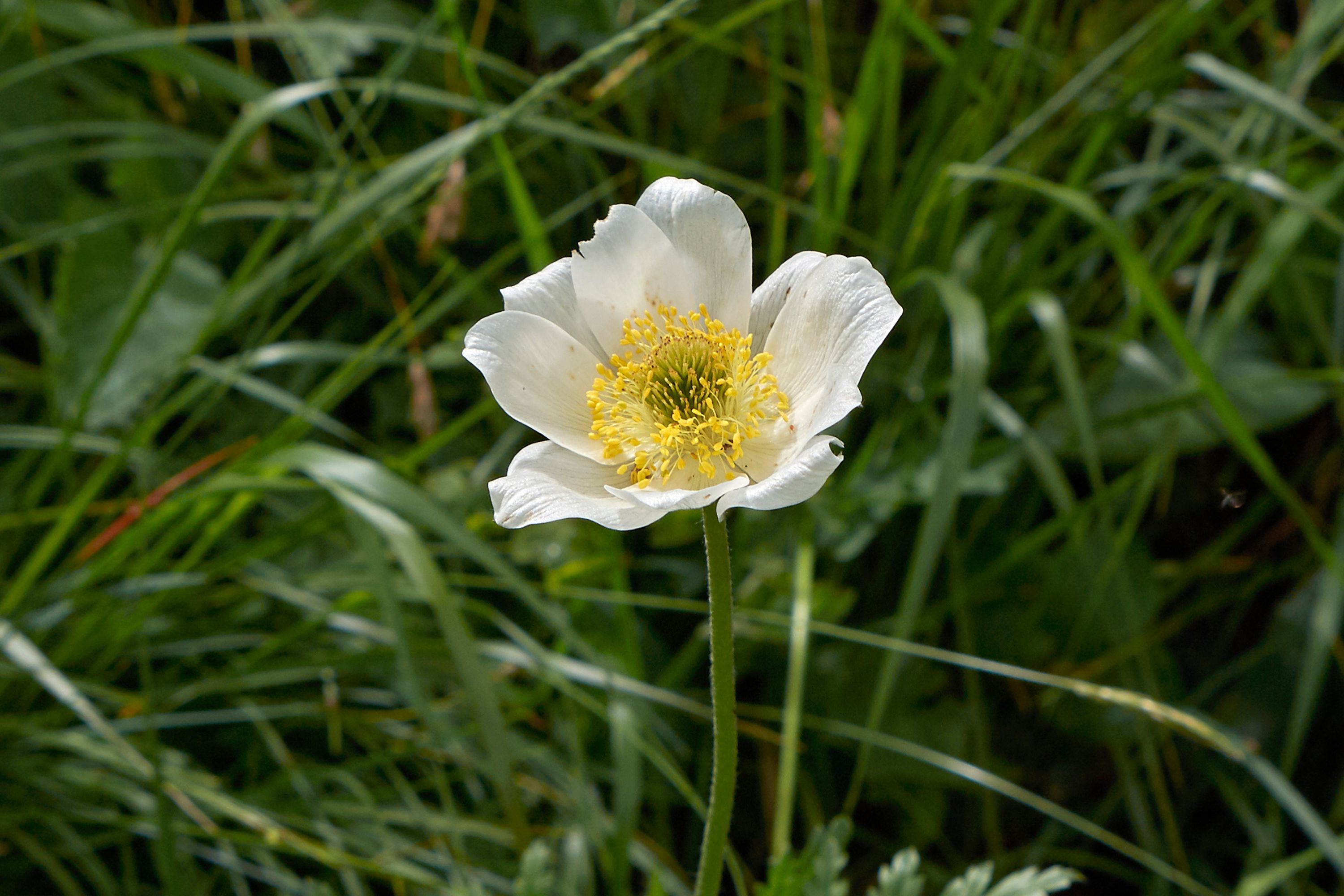Alpine Pasqueflower
(Pulsatilla alpina)

Description
Pulsatilla alpina, commonly known as Alpine Pasqueflower, is a herbaceous perennial plant that belongs to the Ranunculaceae family. The plant is native to the high-altitude regions of the Alps, Carpathians, and the Arctic, where it thrives in rocky and grassy habitats. Pulsatilla alpina is known for its showy and striking flowers that bloom in early spring, and its medicinal properties. In this article, we will explore the taxonomy, morphology, distribution, habitat, growth requirements, and uses of Pulsatilla alpina. Taxonomy Pulsatilla alpina was first described by Carl Linnaeus in 1753 in his book Species Plantarum. The genus name, Pulsatilla, is derived from the Latin word pulsare, which means to beat, referring to the beating of the anthers in the wind. The species name, alpina, is derived from the Latin word alpinus, which means "of the Alps," referring to the plant's native range. Morphology Pulsatilla alpina is a herbaceous perennial plant that grows up to 30 cm tall. The plant has a fibrous root system and forms a rosette of finely divided, hairy leaves that are grayish-green in color. The leaves are basal and are divided into narrow segments that are deeply incised. The stem is erect, hairy, and unbranched, with a single flower at the top. The flower is large and showy, with a diameter of 5-7 cm. The flower has five to eight petal-like sepals that are purple or bluish-violet in color, with conspicuous yellow stamens in the center. The plant blooms in early spring, from April to June. Distribution and Habitat Pulsatilla alpina is native to the high-altitude regions of the Alps, Carpathians, and the Arctic. The plant is found at elevations between 800 and 3,000 meters above sea level. The plant thrives in rocky and grassy habitats, such as alpine meadows, subalpine slopes, and limestone cliffs. Pulsatilla alpina is adapted to cold and harsh environments and can withstand freezing temperatures, strong winds, and snow cover. Growth Requirements Pulsatilla alpina requires well-drained soil that is rich in organic matter. The plant prefers full sun to partial shade and can tolerate acidic to alkaline soil pH. Pulsatilla alpina is a cold-hardy plant and can withstand temperatures as low as -40°C. The plant requires a cool and moist climate, with moderate to high rainfall. Pulsatilla alpina is adapted to high-altitude environments and can tolerate low oxygen levels and strong winds. Uses Pulsatilla alpina has several medicinal properties and has been used in traditional medicine for centuries. The plant contains several alkaloids, including protoanemonin, anemonin, and ranunculin, which have anti-inflammatory, analgesic, and sedative properties. The plant has been used to treat respiratory infections, rheumatism, menstrual cramps, and anxiety. Pulsatilla alpina has also been used as a homeopathic remedy for various ailments. In addition to its medicinal properties, Pulsatilla alpina is also used as an ornamental plant in gardens and rockeries. The plant's showy and striking flowers are a favorite among gardeners and can be grown in containers or as a border plant. Pulsatilla alpina is easy to grow and requires minimal maintenance.
Taxonomic tree:







